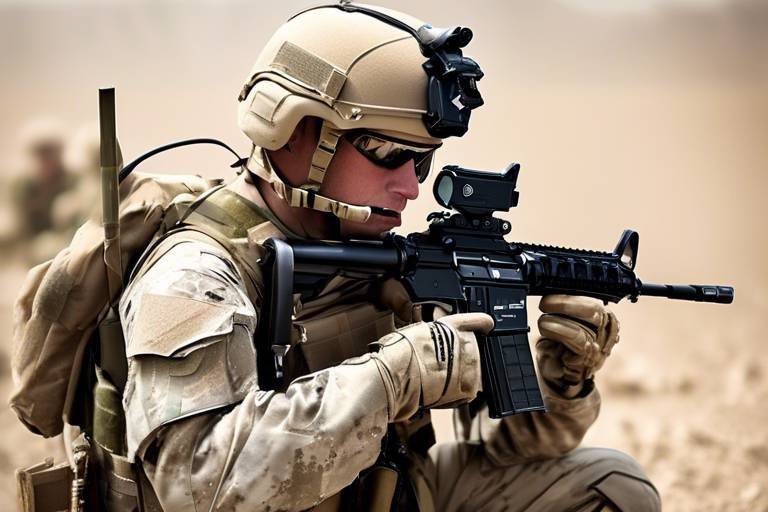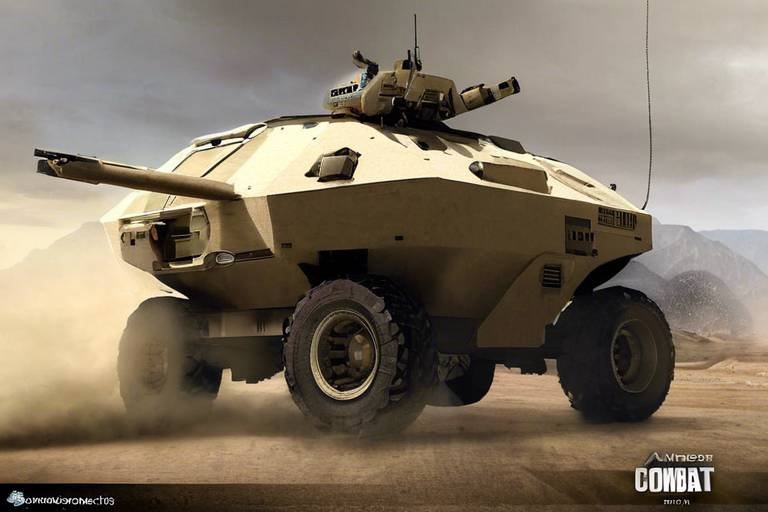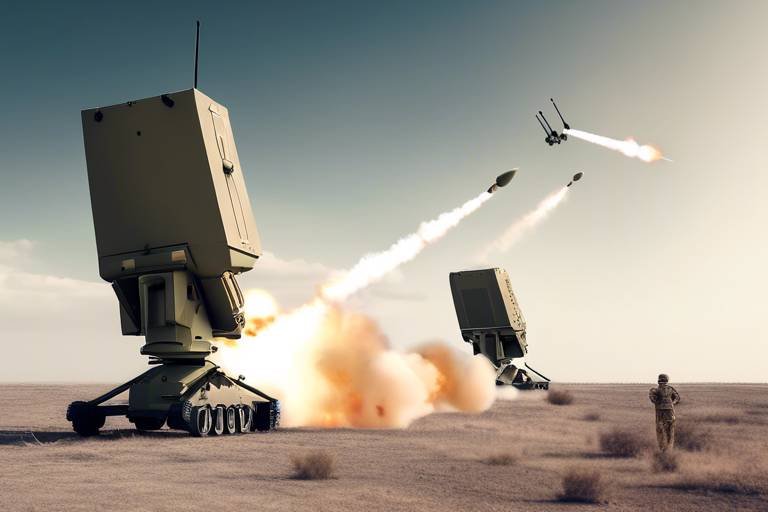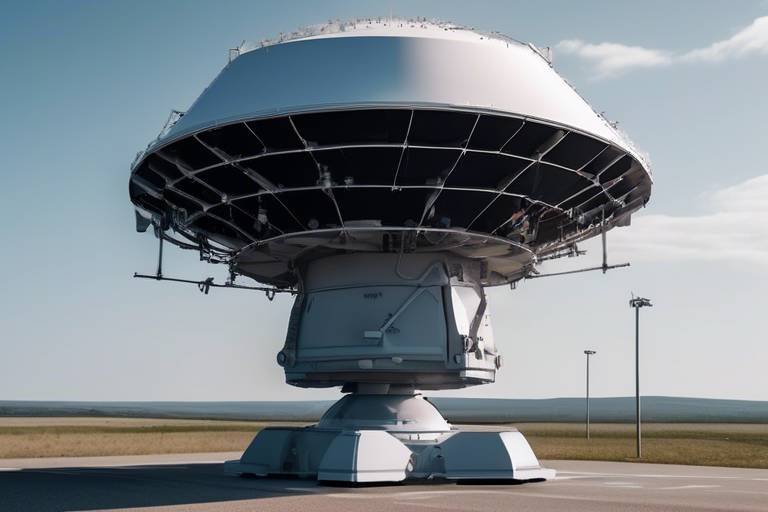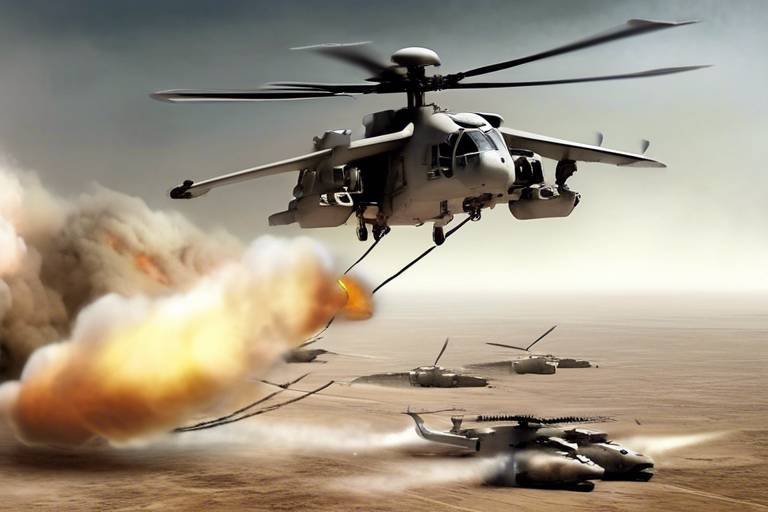Military Drone Technology - Where It’s Heading in 2025
The evolution of military drone technology is nothing short of astounding, and as we look towards 2025, the landscape promises to be even more transformative. Drones have already revolutionized modern warfare, providing capabilities that were once the stuff of science fiction. From surveillance to combat missions, these unmanned aerial vehicles (UAVs) are redefining how military operations are conducted. But what does the future hold? In this article, we'll explore the anticipated advancements, applications, and implications of military drone technology as we approach the mid-2020s.
Before we dive into the future, it's essential to understand where we currently stand. The existing military drones can be categorized into several types, including reconnaissance drones, combat drones, and loitering munitions. Each type serves a unique purpose in contemporary warfare:
| Type of Drone | Primary Function | Examples |
|---|---|---|
| Reconnaissance Drones | Surveillance and intelligence gathering | RQ-11 Raven, MQ-1 Predator |
| Combat Drones | Engaging enemy targets | MQ-9 Reaper, X-47B |
| Loitering Munitions | Targeted strikes on enemy positions | Switchblade, Harop |
These drones are equipped with advanced sensors and weaponry, allowing them to perform a myriad of tasks with precision and efficiency. Key players in the industry, such as Northrop Grumman, General Atomics, and Lockheed Martin, are at the forefront of drone development, constantly pushing the boundaries of what these machines can do.
As we look forward to 2025, several technological advancements are expected to reshape the capabilities of military drones. One of the most significant trends is the integration of artificial intelligence (AI) and machine learning. These technologies will enable drones to process vast amounts of data in real-time, enhancing their decision-making capabilities and operational efficiency. Imagine a drone that can analyze enemy movements and adapt its strategy on the fly—this is not far from reality.
AI and machine learning are set to play a crucial role in enhancing drone functionalities. With improved algorithms, drones will be able to learn from past missions, recognize patterns, and predict outcomes. This means that military personnel will have access to actionable intelligence faster than ever, allowing them to make informed decisions in high-stakes situations.
Another exciting development is the evolution of autonomous flight capabilities. By 2025, we can expect drones to operate with minimal human intervention, navigating complex environments and executing missions independently. This leap in technology not only increases the effectiveness of operations but also significantly reduces risks to personnel. Picture a drone that can infiltrate enemy territory, gather intelligence, and return safely without a pilot on board—this is the future we are heading towards.
As surveillance technology continues to advance, military drones will be equipped with high-resolution imaging systems and real-time data analysis tools. This enhancement will allow for unparalleled intelligence-gathering capabilities, providing military forces with critical information that can change the outcome of missions. The ability to monitor enemy movements in real-time will be a game changer, offering strategic advantages that were previously unimaginable.
The future of military drones also lies in their integration with other defense systems. As drones become more sophisticated, their ability to work alongside ground forces and naval units will be crucial. This cohesive operational strategy will enhance overall mission effectiveness and ensure that all branches of the military can respond to threats in a unified manner.
As military drone technology evolves, it brings forth a myriad of ethical and legal concerns. The use of drones in warfare raises questions about accountability, civilian safety, and the adherence to international laws governing drone operations. These implications are critical to consider as we move forward.
One of the major challenges in drone warfare is determining accountability. Who is responsible when a drone strike results in unintended casualties? The complexities of identifying responsible parties complicate military ethics and raise significant concerns about transparency and oversight in military operations.
Another pressing issue is the impact of drone operations on civilian populations. The potential for collateral damage in conflict zones is a serious concern, emphasizing the need for stringent protocols to minimize risks to innocent lives. As military forces employ drones more frequently, developing strategies to protect civilians becomes paramount.
Looking ahead, the integration of drone technology into military strategy will undoubtedly lead to shifts in tactics and operations. Armed forces worldwide will need to adapt their approaches to leverage the full potential of these advanced systems.
Advancements in drone technology could significantly alter the global military balance. Nations may engage in new arms races, seeking to outpace one another in drone capabilities. This shift in power dynamics could lead to unforeseen consequences on the international stage.
As drones become integral to military operations, training programs will need to evolve. Personnel will require new skills and knowledge to operate advanced drone systems effectively. This adaptation will be essential to ensure that military forces remain competitive in an ever-changing technological landscape.
- What types of military drones are currently in use? Military drones can be categorized into reconnaissance drones, combat drones, and loitering munitions, each serving different operational purposes.
- How will AI impact military drone operations? AI will enhance decision-making and operational efficiency, allowing drones to process data and adapt strategies in real-time.
- What are the ethical concerns surrounding military drones? Key concerns include accountability for drone strikes, civilian safety, and compliance with international laws governing warfare.
- How will military training change with the rise of drones? Training programs will adapt to equip personnel with the necessary skills to operate advanced drone systems effectively.

Current State of Military Drones
The realm of military drones has evolved at a breathtaking pace over the past decade, transforming the landscape of modern warfare. Today, these unmanned aerial vehicles (UAVs) are not just tools but pivotal components of military strategy, offering capabilities that were once the stuff of science fiction. From surveillance to combat, military drones serve various roles, and their impact on contemporary warfare is profound. The current state of military drones can be categorized into several types, each designed for specific missions and operational needs.
As of now, the most prominent types of military drones include:
- Reconnaissance Drones: These are primarily used for surveillance and intelligence gathering. Equipped with high-resolution cameras and sensors, they provide real-time data on enemy movements and terrain.
- Combat Drones: Also known as armed drones, these UAVs are capable of carrying weapons and striking targets with precision. They play a crucial role in airstrikes and ground support operations.
- Transport Drones: These drones are designed to deliver supplies, equipment, or even medical assistance to troops in remote or hostile areas, ensuring that forces remain operational and well-equipped.
Several key players dominate the military drone market, each contributing unique innovations and technologies. Companies like General Atomics, known for the Predator and Reaper drones, and Northrop Grumman, with its Global Hawk surveillance drone, are at the forefront. These manufacturers are not only pushing the boundaries of what drones can do but are also setting the standard for reliability, efficiency, and effectiveness in military applications.
Moreover, the capabilities of military drones have expanded significantly. Today's drones boast advanced features such as real-time data transmission, high-altitude endurance, and multi-sensor integration. These enhancements allow for more sophisticated missions and greater operational flexibility. For example, drones can now perform electronic warfare, jam enemy communications, and even conduct cyber operations, showcasing their versatility on the battlefield.
Furthermore, military drones are increasingly being integrated into broader defense systems. This integration allows for seamless communication between aerial and ground forces, enhancing situational awareness and tactical decision-making. As a result, the synergy between drones and traditional military units is paving the way for more cohesive and effective operational strategies.
In summary, the current state of military drones is characterized by rapid technological advancements, diverse applications, and a significant impact on modern warfare. As we look toward the future, it is clear that these unmanned systems will continue to play an essential role in shaping military strategies and operations across the globe.
- What are the primary uses of military drones? Military drones are used for surveillance, reconnaissance, combat operations, and logistics support.
- Who are the leading manufacturers of military drones? Key manufacturers include General Atomics, Northrop Grumman, and Boeing.
- How do military drones enhance operational effectiveness? Drones provide real-time data, improve situational awareness, and enable precise targeting, which enhances overall mission success.

Technological Advancements on the Horizon
As we look towards 2025, the landscape of military drone technology is set to undergo a profound transformation. The integration of cutting-edge advancements will not only enhance the capabilities of these unmanned aerial vehicles (UAVs) but also redefine the very nature of warfare itself. Imagine a world where drones can think for themselves, analyze vast amounts of data in real-time, and execute complex missions with minimal human intervention. This is not science fiction; it's the impending reality of military drones.
One of the most exciting prospects is the incorporation of artificial intelligence (AI) and machine learning into drone operations. These technologies will empower drones to make split-second decisions based on data collected from their surroundings. For instance, consider a drone equipped with AI that can distinguish between combatants and non-combatants in a crowded urban environment. This capability could significantly reduce civilian casualties, a pressing concern in modern warfare. Furthermore, the ability of drones to learn from past missions will enhance their effectiveness, enabling them to adapt to changing conditions on the battlefield.
The role of AI and machine learning in military drones cannot be overstated. These technologies will enhance decision-making processes, allowing drones to process information faster than any human operator. Imagine a drone that can analyze thousands of images from surveillance cameras, identifying potential threats while filtering out irrelevant data. This level of operational efficiency will not only streamline military operations but also provide commanders with actionable intelligence at an unprecedented speed.
Moreover, the evolution of autonomous flight capabilities is poised to revolutionize how military operations are conducted. Drones will increasingly operate without direct human control, utilizing advanced algorithms to navigate complex environments. Picture a swarm of drones executing a coordinated strike on enemy positions, communicating with each other in real-time to optimize their approach. This autonomy will minimize risks to personnel, allowing military forces to engage in operations that were previously deemed too dangerous.
In addition to autonomy, advancements in surveillance technologies will enhance military drones' capabilities. High-resolution imaging systems and real-time data analysis will enable drones to gather intelligence with remarkable precision. For example, a drone equipped with cutting-edge imaging technology could monitor enemy troop movements from thousands of feet in the air, relaying critical information back to command centers. This enhanced surveillance capability will not only improve situational awareness but also facilitate timely and informed decision-making.
As military drones become more sophisticated, their integration with other defense systems will be crucial. Drones will not operate in isolation; instead, they will work in tandem with ground forces, naval units, and cyber defense systems. This cohesive operational strategy will enhance the overall effectiveness of military campaigns. For instance, imagine a scenario where drones provide real-time intelligence to ground troops, allowing them to adjust their tactics based on the latest information. This level of integration will create a formidable military force capable of responding to threats with agility and precision.
In conclusion, the technological advancements on the horizon for military drone technology are nothing short of revolutionary. With AI, autonomous capabilities, and enhanced surveillance systems, the future of warfare is being redefined. As these technologies continue to evolve, we can expect a significant shift in how military operations are conducted, leading to more effective and efficient strategies on the battlefield.
- What are the main advancements expected in military drone technology by 2025?
Key advancements include AI integration, autonomous flight capabilities, and enhanced surveillance systems, all aimed at improving operational efficiency and decision-making.
- How will AI improve military drone operations?
AI will enable drones to process data faster, make real-time decisions, and learn from past experiences, significantly enhancing their effectiveness on the battlefield.
- What are the ethical concerns surrounding military drones?
Ethical concerns include accountability for drone strikes, civilian safety, and the implications of autonomous decision-making in warfare.
- How will military strategy change with the rise of drone technology?
Military strategy will adapt to incorporate drones as integral components of operations, leading to new tactics and enhanced coordination among various military units.
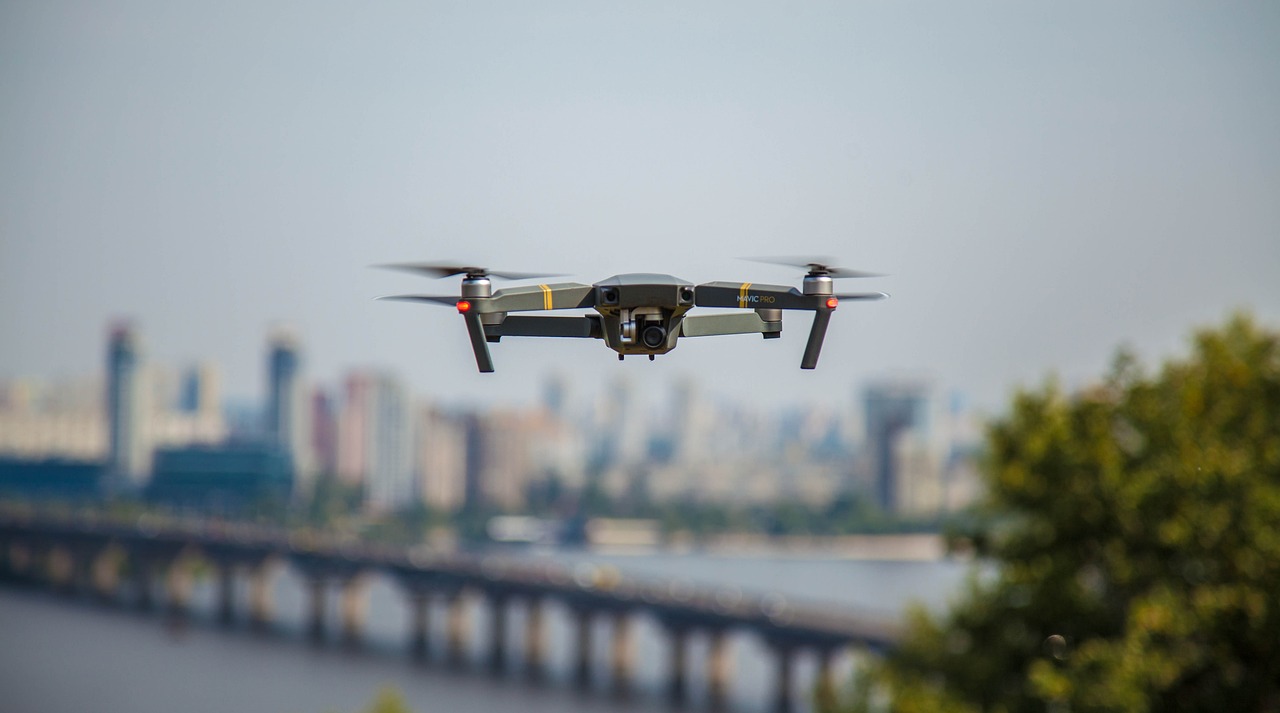
AI and Machine Learning in Drones
Artificial Intelligence (AI) and Machine Learning (ML) are revolutionizing the landscape of military drone technology, and their impact is nothing short of astounding. Imagine a drone that can not only fly but also learn from its environment, analyze data in real-time, and make decisions faster than any human operator. This is the future we are heading towards, and it’s set to redefine how military operations are conducted.
At the core of this transformation is the ability of drones to process vast amounts of data. With advanced algorithms, these machines can identify patterns, predict outcomes, and adapt their strategies on the fly. For instance, during reconnaissance missions, drones equipped with AI can autonomously analyze video feeds, distinguishing between civilian and military targets with remarkable accuracy. This capability not only enhances operational efficiency but also minimizes the risk of collateral damage, a major concern in modern warfare.
Moreover, the integration of AI allows for enhanced decision-making processes. Drones can evaluate multiple scenarios and select the optimal course of action based on real-time data. This level of cognitive processing is crucial in high-stakes environments where every second counts. For example, in a combat situation, an AI-powered drone can assess threats, prioritize targets, and execute missions without requiring constant human input, thereby reducing the cognitive load on operators.
But how do AI and ML work together in drones? Here’s a simplified breakdown:
- Data Collection: Drones gather data from various sensors, cameras, and environmental inputs.
- Data Analysis: Machine learning algorithms analyze this data to identify patterns and make predictions.
- Decision Making: AI systems use the analyzed data to make informed decisions about navigation, target selection, and mission execution.
- Feedback Loop: The system learns from the outcomes of its decisions, continuously improving its performance over time.
As we look towards 2025, the potential for AI and ML in military drones seems limitless. Innovations such as swarm technology, where multiple drones operate in concert, are already being tested. Imagine a fleet of drones that can communicate with each other, sharing information and coordinating attacks in real-time. This would create a formidable force capable of overwhelming traditional defense systems.
However, with great power comes great responsibility. The integration of AI into military drones raises significant ethical questions. Accountability becomes murky when a machine makes a life-and-death decision. Who is responsible if a drone misidentifies a target? These are the challenges that military leaders and policymakers will need to address as they harness the capabilities of AI and ML in warfare.
In conclusion, AI and machine learning are not just buzzwords; they are the backbone of the next generation of military drones. As these technologies continue to evolve, they promise to enhance the effectiveness, efficiency, and safety of military operations. The future of warfare is not just about firepower; it's about intelligence, strategy, and the ethical implications of using machines to make decisions that can change the course of human lives.
- What is the role of AI in military drones? AI enhances the decision-making capabilities of drones, allowing them to analyze data and make autonomous decisions in real-time.
- How does machine learning improve drone technology? Machine learning allows drones to learn from past experiences, improving their performance over time and making them more effective in various missions.
- What ethical concerns are associated with AI in drones? Ethical concerns include accountability for decisions made by AI, the potential for collateral damage, and the implications of autonomous warfare.
- Will AI drones replace human operators? While AI will enhance drone capabilities, human oversight will remain crucial, especially in complex and morally sensitive situations.

Autonomous Flight Capabilities
The evolution of in military drones is nothing short of revolutionary. Imagine a world where drones can navigate complex terrains and execute missions with minimal human intervention. This isn't science fiction; it's rapidly becoming a reality. As we look towards 2025, the integration of advanced algorithms and real-time data processing is set to redefine how military operations are conducted. Drones equipped with autonomous flight systems will be able to make split-second decisions, adapting to changing environments and threats without waiting for human commands.
One of the most exciting aspects of this technology is its potential to enhance operational efficiency. By reducing the need for constant human oversight, military forces can deploy drones in more dangerous situations, thereby minimizing risks to personnel. For instance, consider a scenario where a drone is tasked with surveillance in a hostile area. With autonomous flight capabilities, it can maneuver around obstacles, avoid enemy detection, and gather intelligence without putting a pilot in harm's way. This shift not only increases the safety of military personnel but also allows for a more extensive coverage of areas that were previously deemed too risky for manned missions.
Moreover, the autonomous capabilities of these drones will be enhanced by machine learning algorithms that allow them to learn from past missions. This means that each flight will contribute to a collective intelligence, enabling drones to improve their performance over time. They will be able to recognize patterns, predict potential threats, and even adapt their flight paths in real time. Imagine a drone that can autonomously identify a target and adjust its route to avoid detection while ensuring mission success. This level of sophistication not only enhances operational capabilities but also raises the stakes in military strategy.
However, with great power comes great responsibility. The rise of autonomous drones brings forth a plethora of ethical considerations. Who is accountable when a drone makes a mistake? What happens if an autonomous drone causes unintended harm? These questions are crucial as we advance towards a future where machines take on more decision-making roles in warfare. The military must establish clear protocols and guidelines to ensure that these autonomous systems operate within the bounds of international law and ethical standards.
In summary, the future of military drones with autonomous flight capabilities is set to transform the landscape of warfare. As technology continues to advance, we can expect to see drones that not only enhance operational effectiveness but also challenge our understanding of military ethics and accountability. The journey towards fully autonomous military drones is just beginning, and it promises to be as thrilling as it is complex.
- What are autonomous flight capabilities?
Autonomous flight capabilities refer to the ability of drones to operate and navigate without direct human control, using advanced algorithms and sensors to make real-time decisions.
- How do autonomous drones improve military operations?
They enhance operational efficiency, reduce risks to personnel, and allow for more extensive coverage of dangerous areas by performing missions without human intervention.
- What ethical concerns are associated with autonomous drones?
Key concerns include accountability for mistakes made by drones and ensuring compliance with international laws governing warfare.
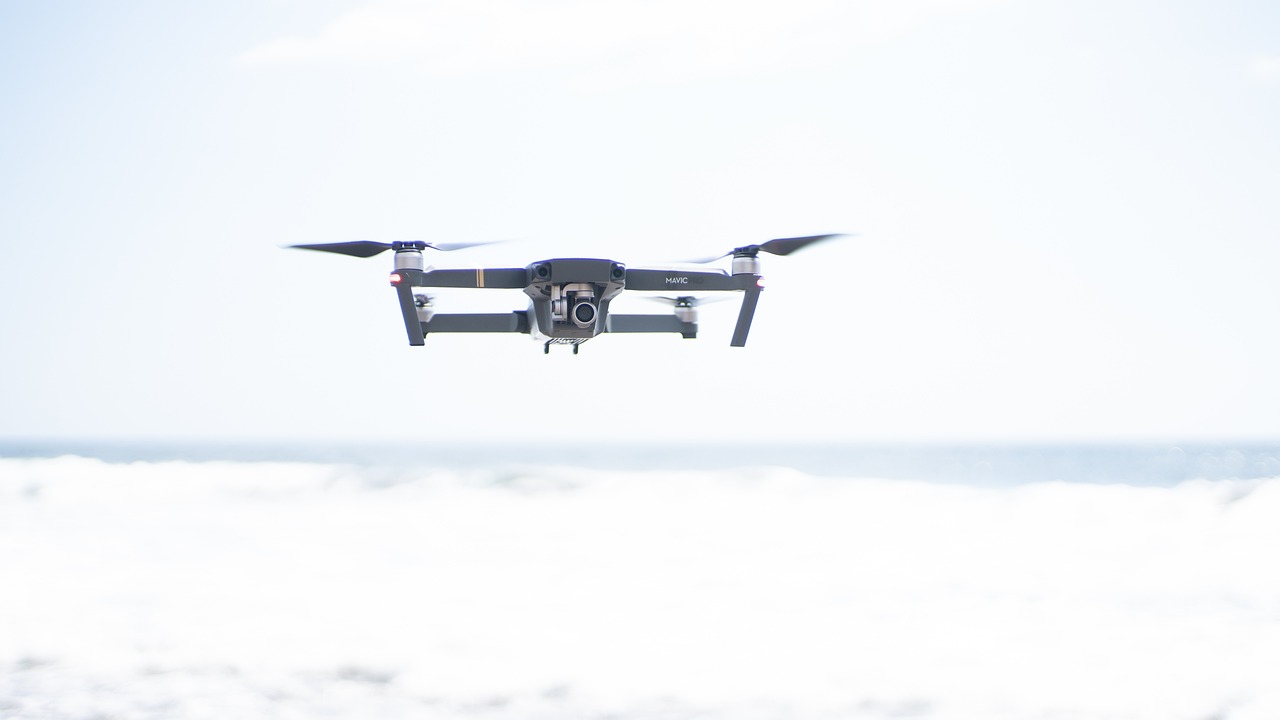
Enhanced Surveillance and Reconnaissance
The landscape of military operations is undergoing a dramatic transformation, particularly in the realm of surveillance and reconnaissance. As we approach 2025, advancements in drone technology are set to redefine how military forces gather intelligence and monitor activities on the battlefield. Imagine a world where drones equipped with high-resolution cameras and state-of-the-art sensors can provide real-time data, giving commanders the upper hand in strategic decision-making. This is not just a fantasy; it’s the reality we are rapidly moving towards.
At the heart of these enhancements are sophisticated imaging systems that can capture detailed visuals from thousands of feet in the air. These drones are not merely flying cameras; they are equipped with multi-spectral sensors that can detect thermal signatures, enabling them to see through fog, smoke, and even darkness. This capability is crucial in modern warfare, where visibility can be severely limited. Furthermore, advancements in data processing algorithms allow for real-time analysis of the gathered information, leading to quicker and more informed tactical responses.
Consider the implications of such technology: a drone can fly over a hostile area, gather intelligence, and relay that information back to command centers within seconds. This level of efficiency not only enhances situational awareness but also minimizes the risk to human operatives. In many cases, these drones can operate autonomously, reducing the need for constant human oversight. This shift towards autonomous surveillance is a game-changer, allowing military personnel to focus on strategy rather than the mechanics of piloting.
Moreover, the integration of artificial intelligence (AI) into drone systems is expected to revolutionize reconnaissance missions. AI can analyze patterns and detect anomalies in data that a human operator might miss, providing insights that could be pivotal in preempting threats. For instance, if a drone identifies unusual movements of enemy troops or equipment, it can alert commanders, allowing for preemptive actions to be taken. This level of proactive intelligence gathering is invaluable in today’s fast-paced combat scenarios.
As military forces around the globe continue to invest in these technologies, we can expect a shift in how intelligence is gathered and utilized. Drones will not only serve as eyes in the sky but will also act as integral components of an interconnected defense network. By sharing data with ground units and naval forces, drones can help create a comprehensive operational picture that enhances coordination and effectiveness across all branches of the military.
In summary, the future of military surveillance and reconnaissance is bright, fueled by rapid advancements in drone technology. With enhanced imaging systems, AI integration, and autonomous capabilities, drones are set to become indispensable tools in the modern battlefield. As we move closer to 2025, the military landscape will undoubtedly be transformed, making way for a new era of intelligence gathering that prioritizes efficiency, safety, and strategic superiority.
- What types of drones are used for military surveillance? Military forces utilize various types of drones, including tactical UAVs (Unmanned Aerial Vehicles) for short-range missions and MALE (Medium Altitude Long Endurance) drones for broader reconnaissance tasks.
- How do drones collect intelligence? Drones collect intelligence through high-resolution cameras, thermal imaging, and other advanced sensors that capture data in real time, which is then analyzed for actionable insights.
- What role does AI play in drone surveillance? AI enhances drone surveillance by analyzing data patterns, detecting anomalies, and providing real-time decision-making support to military operators.
- Are military drones autonomous? Many modern military drones are capable of autonomous flight, meaning they can operate without direct human control while still transmitting data back to command centers.
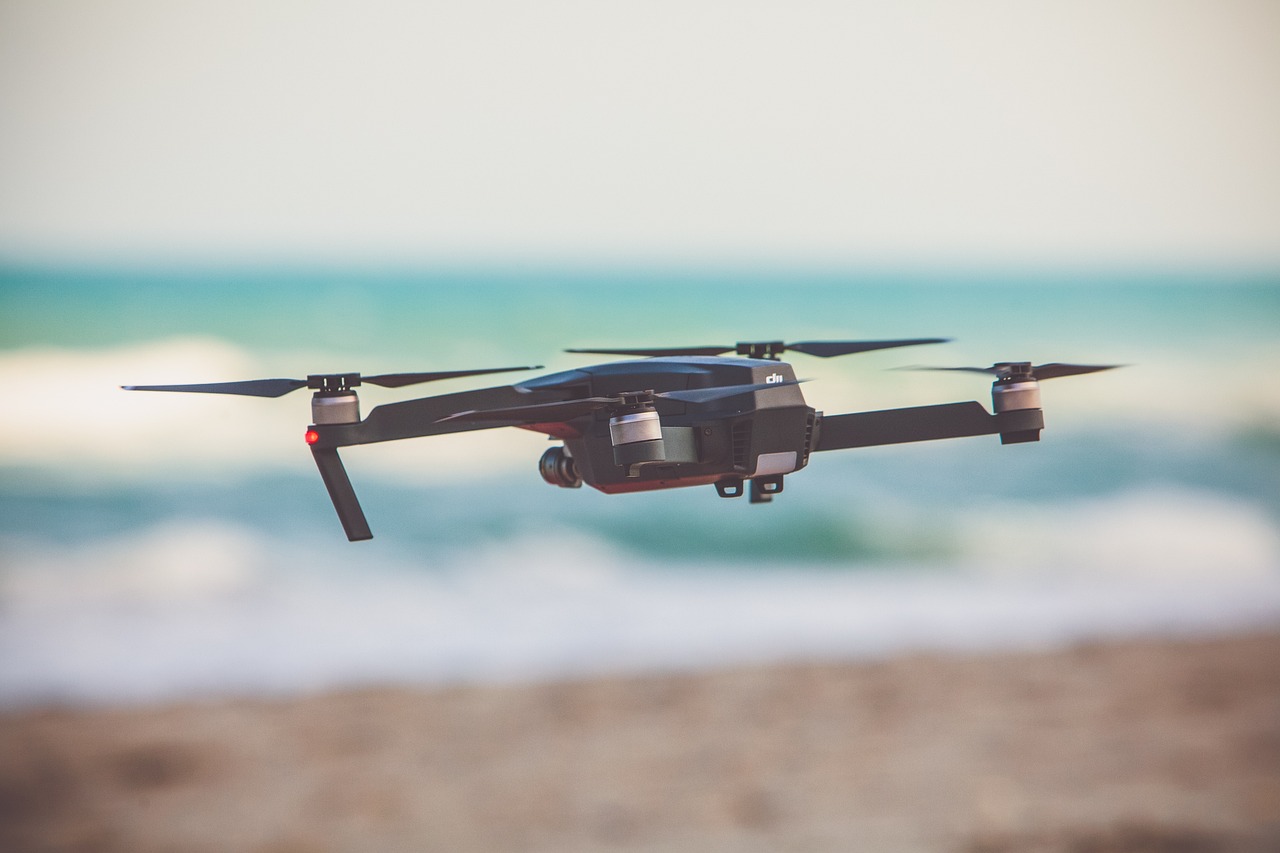
Integration with Other Military Systems
As military drone technology advances, the integration of drones with other military systems is becoming increasingly vital for modern warfare. Think of drones as the new Swiss Army knife of the battlefield; they are versatile tools that, when combined with other military assets, can create a formidable force multiplier. This integration allows for improved situational awareness, enhanced operational efficiency, and the ability to execute complex missions with greater precision.
For instance, when drones are integrated with ground forces, they can provide real-time intelligence that informs tactical decisions. Imagine a drone flying over a battlefield, capturing high-resolution images and data, which are then instantly transmitted to ground commanders. This capability enables a swift response to emerging threats, allowing troops to adapt their strategies on the fly. Moreover, drones can serve as forward observers, relaying crucial information about enemy positions and movements, which is essential for coordinating strikes and maneuvers.
Similarly, the integration of drones with naval units can revolutionize maritime operations. Drones can be deployed for surveillance and reconnaissance missions over vast ocean areas, identifying potential threats before they reach friendly vessels. By sharing data with naval command centers, drones can enhance the situational awareness of fleets, ensuring that naval forces remain one step ahead of adversaries. This synergy between air and sea assets not only improves operational readiness but also fosters a comprehensive approach to defense.
Furthermore, the integration of drones with cyber capabilities is another frontier that military forces are exploring. Drones equipped with cyber tools can conduct electronic warfare operations, disrupting enemy communications and systems while simultaneously gathering intelligence. This dual capability enhances the overall effectiveness of military operations, allowing for a more coordinated and strategic approach to conflict.
However, the successful integration of drones with other military systems requires significant investment in training and technology. Personnel must be trained not only to operate drones but also to understand how to leverage them in conjunction with other military assets. This training includes learning how to interpret data from drones and make informed decisions based on that intelligence. Additionally, military planners must ensure that communication protocols are robust, enabling seamless data sharing between drones and other platforms.
In conclusion, the integration of military drones with other systems is not just a trend; it is a fundamental shift in how modern armed forces operate. As we look towards 2025 and beyond, this integration will likely define the future of military strategy, enabling forces to conduct operations that are more effective, efficient, and responsive to the complexities of contemporary warfare.
- What are military drones used for? Military drones are primarily used for surveillance, reconnaissance, and targeted strikes. They provide real-time intelligence and can operate in environments that are too dangerous for manned aircraft.
- How do drones integrate with other military systems? Drones can share data and intelligence with ground forces, naval units, and cyber capabilities, enhancing overall situational awareness and operational effectiveness.
- What is the future of military drone technology? The future of military drone technology includes advancements in AI, autonomy, and integration with other military systems, which will redefine operational capabilities.

Ethical and Legal Implications
As military drone technology advances, it brings with it a plethora of ethical and legal implications that cannot be overlooked. The integration of drones into warfare raises significant questions about accountability, civilian safety, and the adherence to international laws governing armed conflict. With the ability to conduct operations remotely, the lines between combatants and non-combatants become increasingly blurred, leading to moral dilemmas that challenge traditional military ethics.
One of the most pressing issues is the concept of accountability in drone warfare. Identifying who is responsible for drone strikes can be complex. Is it the pilot operating the drone from thousands of miles away, the commanding officer who authorized the strike, or the government that developed the technology? This ambiguity complicates the ethical landscape, as it becomes difficult to assign blame or praise for the outcomes of these operations. Moreover, the lack of transparency surrounding drone missions often leads to public distrust and skepticism regarding military intentions.
Furthermore, the potential for collateral damage raises serious concerns about civilian safety. Drone strikes, while precise in many cases, can still result in unintended casualties. The ethical implications of risking civilian lives for military objectives are profound. Military forces must develop stringent protocols to minimize civilian harm, ensuring that every possible measure is taken to protect innocent lives in conflict zones. The challenge lies in balancing the effectiveness of military operations with the moral obligation to prevent unnecessary suffering.
In addition to accountability and civilian safety, the evolution of drone technology necessitates a reevaluation of international laws governing armed conflict. Current legal frameworks may not adequately address the unique challenges posed by drone warfare. For instance, how do existing laws apply to autonomous drones that can make decisions without human intervention? This question highlights the urgent need for international dialogue and cooperation to establish clear legal guidelines for the use of drones in military operations.
As military forces around the world increasingly rely on drones, it is crucial to engage in discussions about these ethical and legal implications. Establishing a framework that addresses accountability, protects civilian lives, and adapts to technological advancements is essential for maintaining the integrity of military operations and upholding humanitarian values. Only through comprehensive dialogue and collaboration can we hope to navigate the complex landscape of drone warfare responsibly.
- What are the main ethical concerns regarding military drones?
The main concerns include accountability for strikes, civilian safety, and the potential for misuse of drone technology.
- How does drone warfare affect civilian populations?
Drone strikes can lead to unintended civilian casualties, raising significant ethical questions about military operations.
- What legal frameworks govern the use of military drones?
Current international laws may not fully address the complexities introduced by drone technology, necessitating new legal guidelines.
- Who is responsible for drone strikes?
Responsibility can be attributed to multiple parties, including the drone operator, commanding officers, and the government.

Accountability in Drone Warfare
The rise of military drones has transformed the landscape of modern warfare, but with this transformation comes a complex web of accountability issues. When a drone strike occurs, who is responsible? Is it the pilot operating the drone from thousands of miles away, the commanding officers who authorized the mission, or the government that provided the orders? These questions are not merely academic; they have profound implications for military ethics, international law, and the very nature of warfare itself.
One of the primary challenges in establishing accountability in drone warfare is the lack of transparency surrounding drone operations. Often, details about missions are classified, making it difficult for the public to understand who is making decisions and how those decisions are justified. This opacity can lead to a sense of impunity among military personnel, as the lines between responsibility and blame become blurred. For instance, if a drone strike results in civilian casualties, determining who is at fault can be a labyrinthine process that involves multiple stakeholders.
Furthermore, the technological detachment inherent in drone warfare complicates accountability. Unlike traditional combat, where soldiers engage directly with their adversaries, drone operators conduct strikes from remote locations, often hundreds or thousands of miles away. This physical separation can create a psychological distance that may lead to a diminished sense of responsibility for the consequences of their actions. When a pilot can strike a target without witnessing the aftermath, it may be easier to justify decisions that could have devastating impacts on civilian populations.
To address these accountability issues, some experts argue for the implementation of stricter oversight mechanisms. This could include:
- Establishing clear rules of engagement that define when and how drones can be used.
- Creating independent bodies to investigate drone strikes, particularly those resulting in civilian casualties.
- Implementing transparent reporting practices that inform the public about drone operations and their outcomes.
Moreover, the international community faces the challenge of developing legal frameworks that govern drone warfare. Existing laws, such as the Geneva Conventions, were not designed with drone technology in mind, leading to gaps in accountability. As countries increasingly rely on drones for military operations, the need for updated regulations becomes critical. This could involve international treaties that establish standards for drone use, ensuring that all nations adhere to the same ethical and legal norms.
In conclusion, accountability in drone warfare is a multifaceted issue that requires careful consideration of ethical, legal, and operational factors. As technology continues to advance, it is essential for military organizations and governments to prioritize transparency and responsibility in their drone operations. Only then can we begin to address the profound implications that arise from this new era of warfare.
- What is accountability in drone warfare?
Accountability in drone warfare refers to the responsibility of military personnel and governments for the decisions made during drone operations, particularly regarding the consequences of those actions. - Why is accountability a challenge in drone warfare?
The challenges stem from a lack of transparency, the psychological distance created by remote operations, and the complexities of existing legal frameworks. - What measures can be taken to improve accountability?
Possible measures include establishing clear rules of engagement, creating independent investigative bodies, and implementing transparent reporting practices. - Are there international laws governing drone warfare?
Current international laws, such as the Geneva Conventions, do not fully address the unique aspects of drone warfare, highlighting the need for updated regulations.
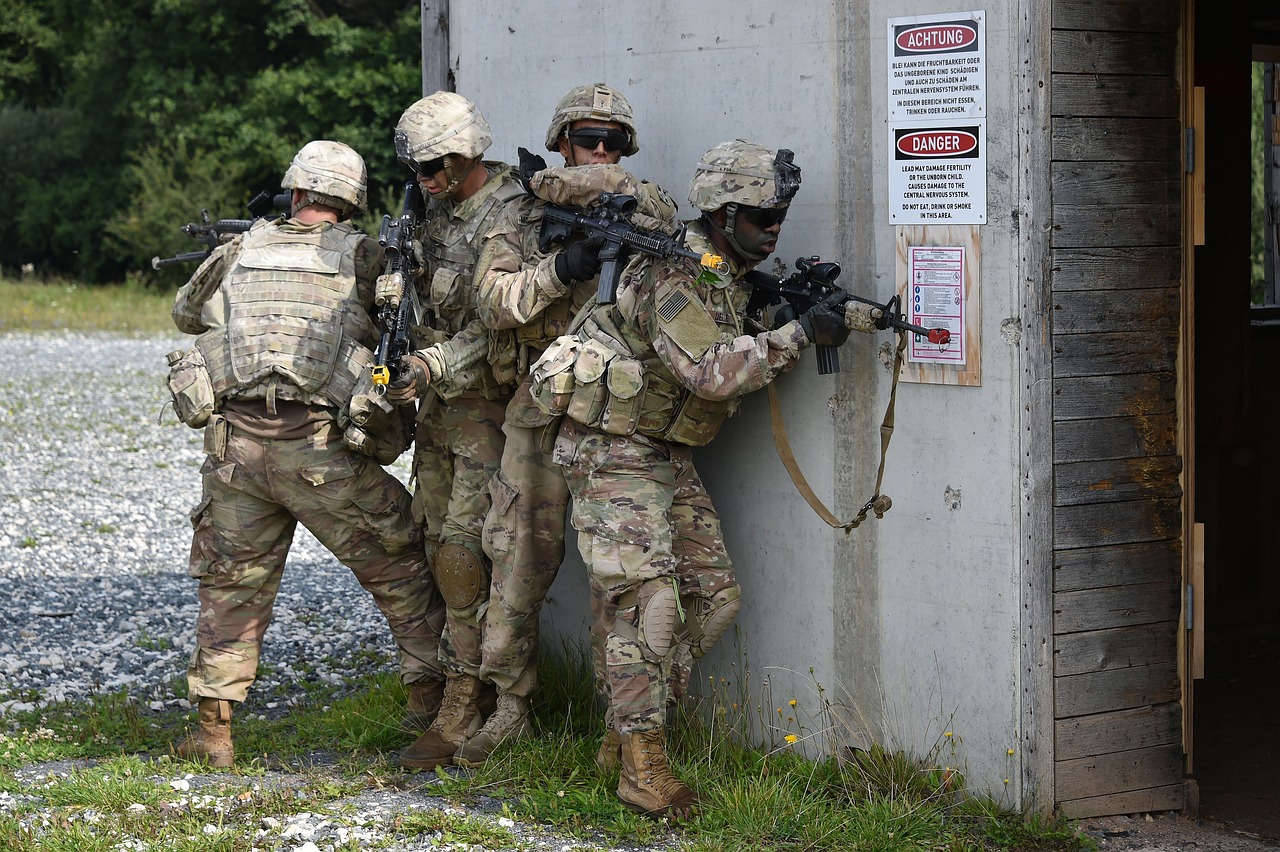
Civilian Safety and Collateral Damage
As military drone operations become increasingly prevalent, the issue of civilian safety and collateral damage has emerged as a pressing concern. With drones capable of striking targets with pinpoint accuracy, one might assume that the risk to innocent lives would diminish. However, the reality is far more complex. The integration of drones into military strategies raises significant ethical questions about the balance between achieving operational objectives and protecting civilian populations.
One of the primary challenges is the intelligence-gathering process. While drones are equipped with advanced surveillance technologies, the data they collect can sometimes lead to misidentifications. For instance, a drone operator might mistakenly identify a civilian gathering as a hostile group, resulting in devastating consequences. This highlights the need for enhanced protocols and technologies to ensure accurate target identification, thereby minimizing the risk of collateral damage.
Moreover, the psychological impact of drone warfare extends beyond the immediate physical harm. Civilians living in conflict zones often experience a constant state of fear and anxiety, knowing that they could be affected by drone strikes at any moment. This phenomenon, often referred to as the "drone effect," can lead to long-term mental health issues within these communities. Therefore, it is essential to consider not only the physical implications of drone strikes but also the psychological toll they take on civilian populations.
To address these concerns, military organizations are increasingly focusing on developing comprehensive protocols that prioritize civilian safety. These protocols may include:
- Enhanced target verification processes to ensure that only legitimate threats are engaged.
- Improved training for drone operators on the importance of civilian safety.
- Implementation of stricter rules of engagement that prioritize de-escalation whenever possible.
Additionally, international laws and regulations governing the use of drones in warfare are in a state of evolution. As nations grapple with the implications of drone technology, there is a growing call for accountability and transparency in military operations. Establishing clear guidelines can help mitigate the risks associated with collateral damage and ensure that military forces are held responsible for their actions.
In conclusion, while military drones offer significant advantages in terms of operational efficiency, the implications for civilian safety and collateral damage cannot be ignored. As technology continues to advance, it is crucial for military strategists to prioritize ethical considerations and implement measures that protect innocent lives. The future of drone warfare will not only be defined by technological advancements but also by the moral choices made by those who wield these powerful tools.
- What measures are being taken to ensure civilian safety in drone operations?
Military organizations are developing comprehensive protocols that prioritize civilian safety, including enhanced target verification processes and improved training for drone operators. - How does drone warfare affect civilian populations psychologically?
The constant presence of drones can create a state of fear and anxiety among civilians, leading to long-term mental health issues. - Are there international laws governing drone warfare?
Yes, international laws and regulations are evolving to address the ethical implications of drone usage in military operations, emphasizing accountability and transparency.
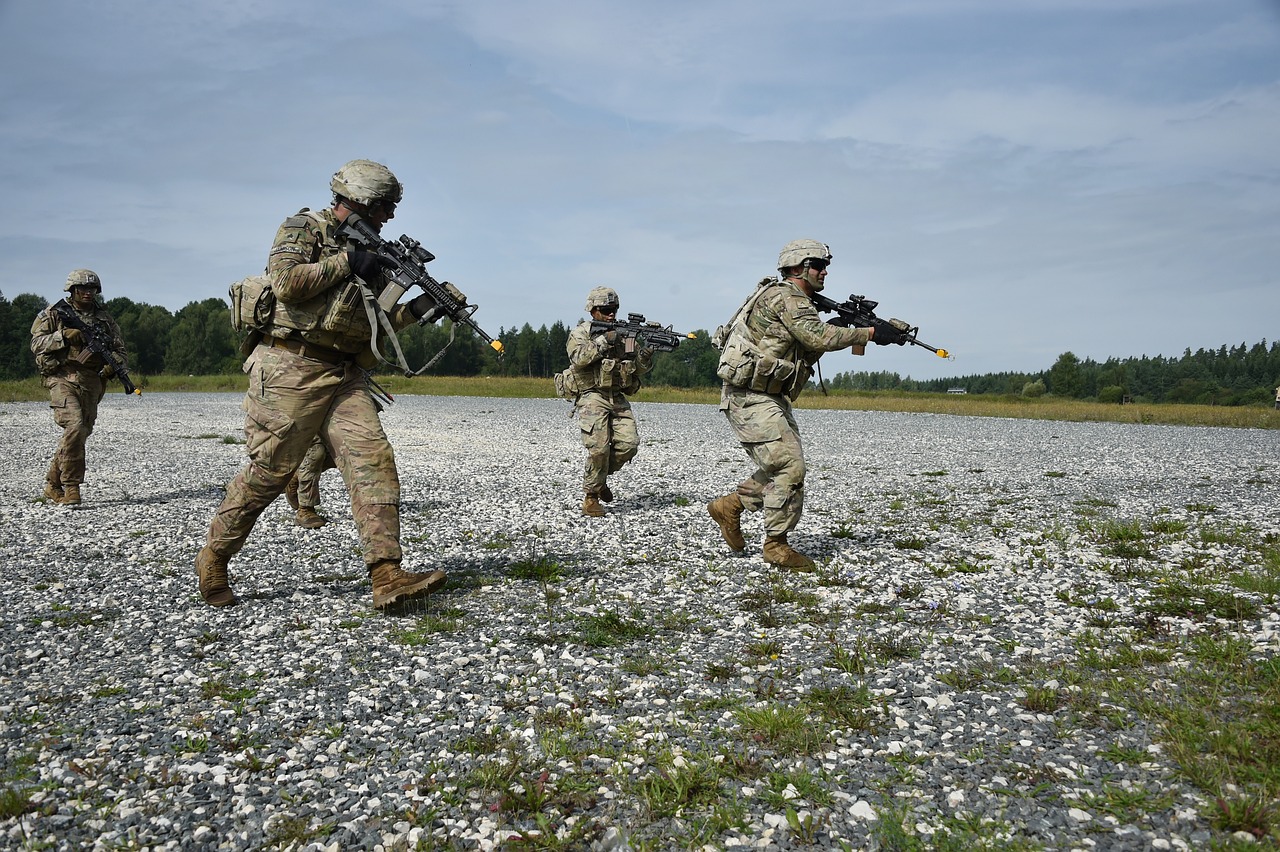
The Future of Military Drone Strategy
As we look towards the horizon of military operations, the future of drone strategy is not just a fleeting thought; it’s a reality that’s rapidly unfolding. Drones are set to become the backbone of modern warfare, reshaping how armed forces approach combat and defense. With their capabilities evolving at an unprecedented pace, it’s crucial to understand how these flying machines will influence military tactics and strategies in the years to come.
One of the most significant shifts we can anticipate is the integration of drones into multi-domain operations. This means that drones will not only operate independently but will also work seamlessly with other military assets, such as ground troops and naval units. Imagine a scenario where a drone equipped with advanced sensors relays real-time intelligence to ground forces while simultaneously coordinating with naval ships for a synchronized strike. This level of integration will enhance situational awareness and operational efficiency, allowing for quicker decision-making and more effective responses to threats.
Moreover, the adaptation of tactics will be paramount. As drones become more capable, military strategies will evolve to leverage their strengths. For instance, we can expect to see a greater emphasis on asymmetric warfare, where smaller, more agile drone units engage in tactics that exploit vulnerabilities in larger, traditional forces. This could lead to a scenario where nations with advanced drone technology can project power without the need for large troop deployments, fundamentally changing the landscape of military engagement.
Another aspect to consider is the impact of artificial intelligence on drone operations. AI will not only enhance the decision-making capabilities of drones but will also allow for more complex mission profiles. Imagine drones that can autonomously adapt their flight paths in response to changing battlefield conditions, making split-second decisions that could mean the difference between success and failure. This level of autonomy will challenge traditional command structures and necessitate a reevaluation of how military leaders interact with and deploy drone assets.
However, with these advancements come significant challenges. The ethical implications of using drones in warfare will require careful consideration. As military strategies evolve, so too must the frameworks that govern their use. Questions about accountability, the potential for collateral damage, and the overall impact on civilian populations will need to be addressed. Establishing clear guidelines and protocols will be essential to ensure that the deployment of drones aligns with international laws and ethical standards.
In conclusion, the future of military drone strategy is poised for transformation. As we step into this new era, the importance of adaptability and innovation cannot be overstated. Armed forces around the globe will need to embrace these changes, continuously evolving their strategies to harness the full potential of drone technology while navigating the ethical complexities that accompany it. The journey ahead is not just about technology; it's about redefining the very nature of warfare.
- What role will drones play in future military strategies?
Drones will be integral to multi-domain operations, enhancing coordination between air, ground, and naval forces. - How will AI affect drone capabilities?
AI will enable drones to make autonomous decisions, improving their effectiveness and adaptability in complex situations. - What are the ethical concerns surrounding military drones?
Key concerns include accountability for drone strikes, risks to civilian safety, and adherence to international laws. - Will training for military personnel change with advanced drone technology?
Yes, training programs will need to evolve to equip personnel with the skills necessary to operate and integrate advanced drone systems.

Impact on Global Military Balance
As we peer into the future of military drone technology, the implications for the global military balance become increasingly evident. Drones are not just tools of warfare; they are game-changers that can redefine how nations approach defense and conflict. With advancements in drone capabilities, countries that invest heavily in this technology could gain significant strategic advantages over their adversaries. Imagine a scenario where a nation can conduct surveillance and perform targeted strikes with precision, all while minimizing the risk to its personnel. This capability can shift the scales of power, potentially leading to new arms races as nations scramble to keep pace with these innovations.
The ability to deploy drones for tactical advantages can alter the dynamics of international relations. Countries that are lagging in drone technology may find themselves at a disadvantage, prompting them to either invest heavily in their own drone programs or seek alliances with nations that possess advanced drone capabilities. This creates a ripple effect, where the military strategies of one country can influence the defense policies of others, leading to a more complex web of global military alliances.
Moreover, the proliferation of drone technology raises concerns about asymmetric warfare. Smaller nations or non-state actors could gain access to advanced drone systems, allowing them to challenge more powerful military forces. This democratization of military technology could lead to situations where traditional military might is no longer the sole determinant of success in conflicts. Instead, we may witness a rise in unconventional warfare tactics, where agility and technology become the new cornerstones of military strategy.
To illustrate the potential shifts in military balance, consider the following table that outlines the current capabilities of various nations in drone technology:
| Country | Drone Type | Key Features | Strategic Advantage |
|---|---|---|---|
| United States | MQ-9 Reaper | Armed, surveillance, long-range | High precision strikes |
| China | CH-4 Rainbow | Armed, surveillance, cost-effective | Rapid deployment |
| Israel | Heron TP | Surveillance, reconnaissance | Advanced sensors |
| Russia | Orion | Armed, surveillance | Stealth capabilities |
As we can see, the competition in drone technology is fierce, and each nation is striving to carve out its place in this new era of warfare. The implications are profound: countries may need to rethink their defense budgets, training programs, and even their diplomatic strategies in light of these advancements. The integration of drones into military operations could lead to a more fragmented and unpredictable global landscape, where the balance of power is in constant flux.
In conclusion, the impact of military drone technology on the global military balance is a multifaceted issue that will continue to evolve. As nations adapt to these changes, we can expect to see shifts in military strategies, alliances, and even the nature of warfare itself. The future may hold a world where the skies are dominated by drones, and understanding this new reality will be crucial for any nation seeking to maintain its security and influence on the global stage.
- What are military drones used for? Military drones are primarily used for surveillance, reconnaissance, and targeted strikes. They offer the ability to gather intelligence without putting personnel at risk.
- How do drones affect military strategy? Drones can change military strategies by providing real-time data, enabling precision strikes, and allowing for operations in hostile environments with reduced risk to human life.
- Are there ethical concerns surrounding military drones? Yes, there are significant ethical concerns, including issues of accountability, civilian safety, and the potential for increased collateral damage in conflict zones.
- What countries are leading in drone technology? The United States, China, Israel, and Russia are among the leaders in military drone technology, each developing advanced systems for various military applications.
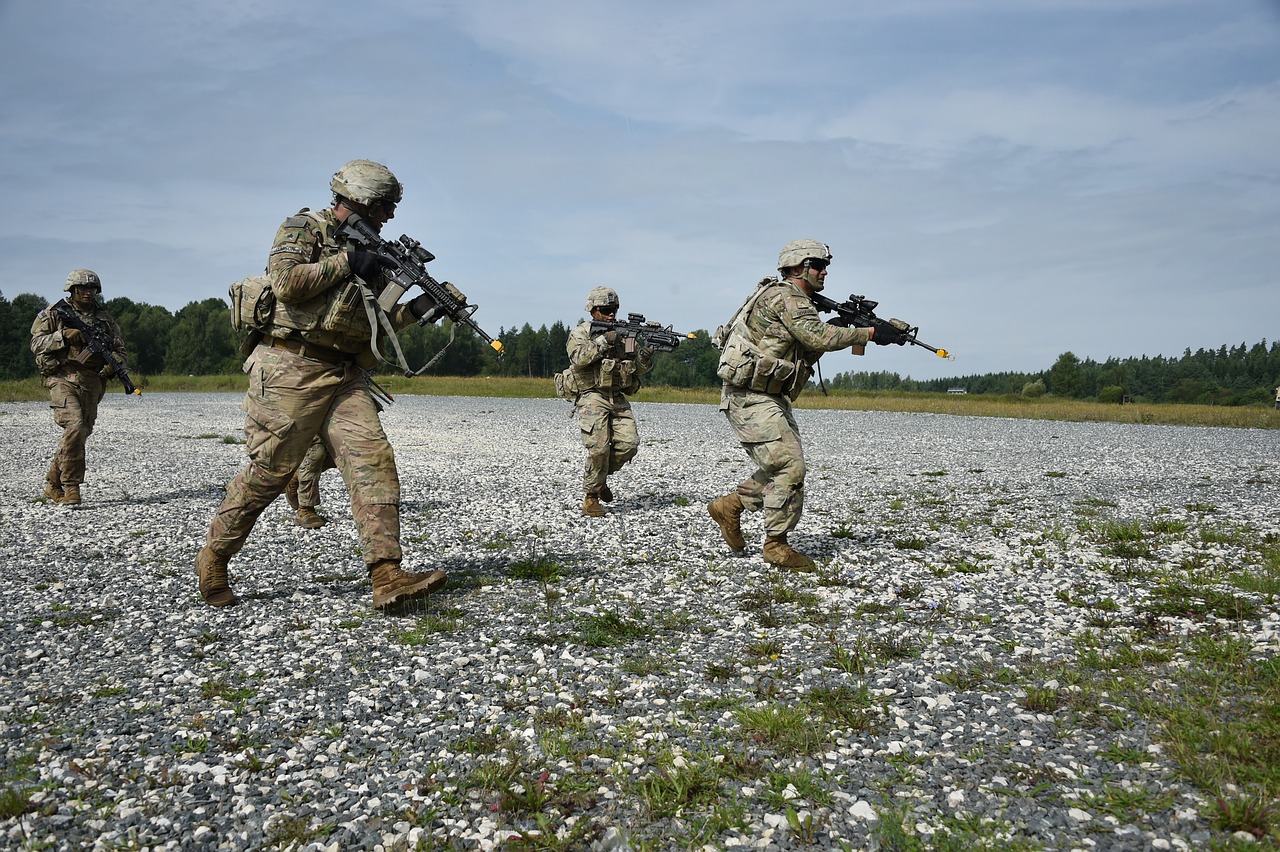
Training and Operational Changes
As military drones continue to evolve and become an integral part of modern warfare, the need for is more pressing than ever. The introduction of sophisticated drone technologies means that armed forces must adapt their training programs to ensure personnel are equipped with the necessary skills to operate these advanced systems effectively. This isn't just about flying a drone; it's about mastering a complex array of technologies that work in concert to achieve mission success.
In the past, drone operators primarily focused on piloting skills, but the future demands a broader skill set. Operators will need to understand artificial intelligence, data analysis, and even cybersecurity measures to protect sensitive information. The training curriculum will likely expand to include:
- AI and Machine Learning: Operators will need to learn how to interact with AI systems that assist in decision-making and operational planning.
- Data Management: Understanding how to analyze and interpret the vast amounts of data collected by drones will be crucial.
- Cybersecurity Protocols: With drones being potential targets for cyberattacks, training will need to cover how to secure these systems against threats.
Moreover, operational changes will also reflect the shift toward a more integrated approach to military strategy. Drones will no longer operate in isolation; they will be part of a larger network that includes ground forces, naval units, and air support. This means that training will have to incorporate joint operations, emphasizing communication and coordination among different branches of the military.
One of the most significant changes in training will be the introduction of simulated environments. Using virtual reality (VR) and augmented reality (AR), military personnel can practice drone operations in realistic settings without the risks associated with live missions. This immersive training method allows operators to hone their skills in a controlled environment, preparing them for real-world scenarios where quick thinking and adaptability are essential.
Furthermore, as drones become more autonomous, the role of the operator may shift from piloting to overseeing multiple drones simultaneously. This new paradigm requires a different kind of training focused on situational awareness and strategic oversight. Operators will need to develop the ability to manage drone fleets, analyzing data from various sources and making rapid decisions based on that information.
In conclusion, the future of military drone operations hinges on comprehensive training programs that reflect the technological advancements and operational changes on the horizon. By investing in the right training and adapting to new technologies, military forces can ensure they remain at the forefront of modern warfare, ready to leverage the full potential of drone technology.
- What types of training will drone operators receive in the future? Operators will receive training in AI, data analysis, and cybersecurity, alongside traditional piloting skills.
- How will drone operations change in military strategy? Drones will be integrated into a larger operational framework, requiring improved communication and coordination among different military branches.
- What role will simulation training play? Simulation training using VR and AR will provide a safe environment for operators to practice and improve their skills.
- Will the role of drone operators change? Yes, operators may shift from direct piloting to managing multiple drones and analyzing data for strategic decision-making.
Frequently Asked Questions
- What are military drones and how are they currently used?
Military drones, also known as unmanned aerial vehicles (UAVs), are aircraft that operate without a human pilot on board. They are currently used for a variety of purposes, including surveillance, reconnaissance, and targeted strikes. These drones provide real-time intelligence and can operate in environments that are too dangerous for manned aircraft, making them invaluable in modern warfare.
- What technological advancements are expected in military drones by 2025?
By 2025, we can expect significant advancements in military drone technology, including enhanced artificial intelligence capabilities, improved sensors for better data collection, and greater autonomy in flight operations. These innovations will allow drones to make quicker decisions, operate in complex environments, and gather intelligence more effectively.
- How will AI and machine learning impact military drone operations?
AI and machine learning will revolutionize military drone operations by enabling smarter decision-making processes. Drones equipped with these technologies can analyze vast amounts of data in real-time, improving operational efficiency and reducing the risk of human error. This means they can adapt to changing battlefield conditions and make informed choices autonomously.
- What ethical concerns arise from the use of military drones?
The use of military drones raises several ethical concerns, particularly regarding accountability for drone strikes and the potential for civilian casualties. Questions about who is responsible for decisions made by autonomous drones and how to ensure civilian safety in conflict zones are critical issues that need to be addressed as drone technology evolves.
- How might military drone technology change global military strategies?
As military drone technology advances, it is likely to shift global military strategies significantly. Armed forces may adapt their tactics to incorporate drones more effectively, potentially leading to new forms of warfare and altering the balance of power among nations. Countries may also engage in an arms race to develop more advanced drone capabilities, reshaping international relations.
- What training will military personnel need for advanced drone operations?
With the increasing reliance on drones, military personnel will require specialized training to operate these advanced systems. This training will focus on understanding drone technology, data analysis, and strategic integration with other military assets. As drone capabilities expand, so too will the need for skilled operators who can maximize their potential in various operational scenarios.





